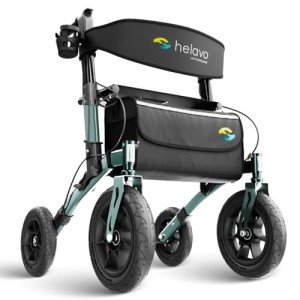The Essential Guide to Handicapped Walkers: Enhancing Mobility for Individuals with Disabilities
Walking aids play a critical role in improving the quality of life for people with handicaps. Among these, handicapped walkers, likewise referred to as walkers or rollators, are important tools that assist users in keeping mobility, self-reliance, and safety. This post intends to supply a thorough introduction of handicapped walkers, discussing their types, advantages, and essential factors to consider for users when selecting a walker that best matches their requirements.
Table of Contents
- What Is a Handicapped Walker?
- Types of Handicapped Walkers
- Standard Walkers
- Two-Wheeled Walkers
- Four-Wheeled Walkers
- Features to Consider When Selecting a Walker
- Advantages of Using Handicapped Walkers
- Frequently asked questions
- Conclusion
What Is a Handicapped Walker?
A handicapped walker is a mobility aid developed to help people who have difficulty walking or preserving balance due to impairments, injuries, or aging. It provides support, stability, and safety, assisting users navigate their environment with greater self-confidence and self-reliance. Handicapped walkers come in different styles to fit different mobility obstacles, making them versatile tools for numerous people.
Kinds Of Handicapped Walkers
Comprehending the various kinds of walkers is vital for selecting the right one. Below is a summary of the main kinds of handicapped walkers:
| Type | Description | Perfect For |
|---|---|---|
| Standard Walkers | Standard frame with no wheels, requiring the user to raise it to move. | People with stable balance. |
| Two-Wheeled Walkers | A lightweight walker geared up with two front wheels for easier motion. | Users requiring more mobility support. |
| Four-Wheeled Walkers | A more advanced model with four wheels, handlebars, and frequently a seat. | Those needing optimum support and rest choices. |
1. Standard Walkers
Standard walkers, the a lot of fundamental version, are built as a durable frame. Lightweight Walker raise the walker and location it forward, allowing for steady motion. This kind of walker is perfect for individuals with minimal mobility however who retain excellent balance.
2. Two-Wheeled Walkers
These walkers include two front wheels, significantly boosting maneuverability compared to basic walkers. Users can press the walker rather of raising it, making it simpler to browse.
3. Four-Wheeled Walkers
Also called rollators, four-wheeled walkers included wheels on all four legs, making them easy to push. Lots of designs likewise include a comfortable seat and back-rest, enabling users to take breaks throughout longer walks or trips.
Features to Consider When Selecting a Walker
Before acquiring a handicapped walker, it's necessary to examine certain features that may boost the user experience and security. Here are some vital considerations:
| Feature | Description |
|---|---|
| Weight Capacity | Ensure the walker supports the user's weight. |
| Height Adjustability | Search for adjustable handlebars for an appropriate fit. |
| Wheels Quality | Take a look at if the wheels are robust for different surfaces. |
| Brake System | Determine if it has a reliable braking mechanism for safety. |
| Storage Options | Consider if it has a basket or bag for individual products. |
Advantages of Using Handicapped Walkers
The advantages of utilizing handicapped walkers extend beyond mobility, supplying emotional and physical benefits:
- Increased Independence: Walkers make it possible for users to walk around without relying exceedingly on caretakers or household members.
- Improved Safety: With enhanced stability, walkers significantly reduce the risk of falls, contributing to a more secure living environment.
- Improved Confidence: Users frequently report feeling more secure and positive when utilizing a walker, encouraging them to engage more in social activities.
- Health Benefits: Regular use of a walker can promote physical activity, resulting in better cardiovascular health, enhanced muscle tone, and overall well-being.
Frequently asked questions
1. How do I know which kind of walker is best for me?
Selecting the very best walker depends upon your physical abilities and mobility requirements. Consulting with a healthcare professional or occupational therapist can provide customized suggestions based on your specific health situation.
2. How should I keep my walker?
Regularly check your walker for wear and tear, mostly concentrating on the wheels and brakes. Clean down surfaces with a damp fabric to keep it clean and store it in a dry location when not in use.
3. Can I utilize a walker on unequal surface areas?
While some walkers are better fit for irregular surfaces than others, caution is advised. It may be advantageous to pick a walker with larger wheels for much better stability on such terrains.
4. Are there walkers developed specifically for outdoor use?
Yes, lots of four-wheeled walkers are particularly developed for outdoor usage, featuring bigger wheels and more robust construction to handle various surfaces.
5. Do walkers been available in different colors or designs?
Yes, different designs, colors, and designs are available to accommodate individual choices while still fulfilling practical requirements.
Handicapped walkers are transformative help that can substantially improve the lifestyle for individuals dealing with mobility challenges. By comprehending the types of walkers, their features, and the advantages they provide, users can make educated options that line up with their individual mobility needs. As technology and design progress, the future of handicapped walkers promises even higher assistance and convenience, motivating self-reliance and an active lifestyle for all.

